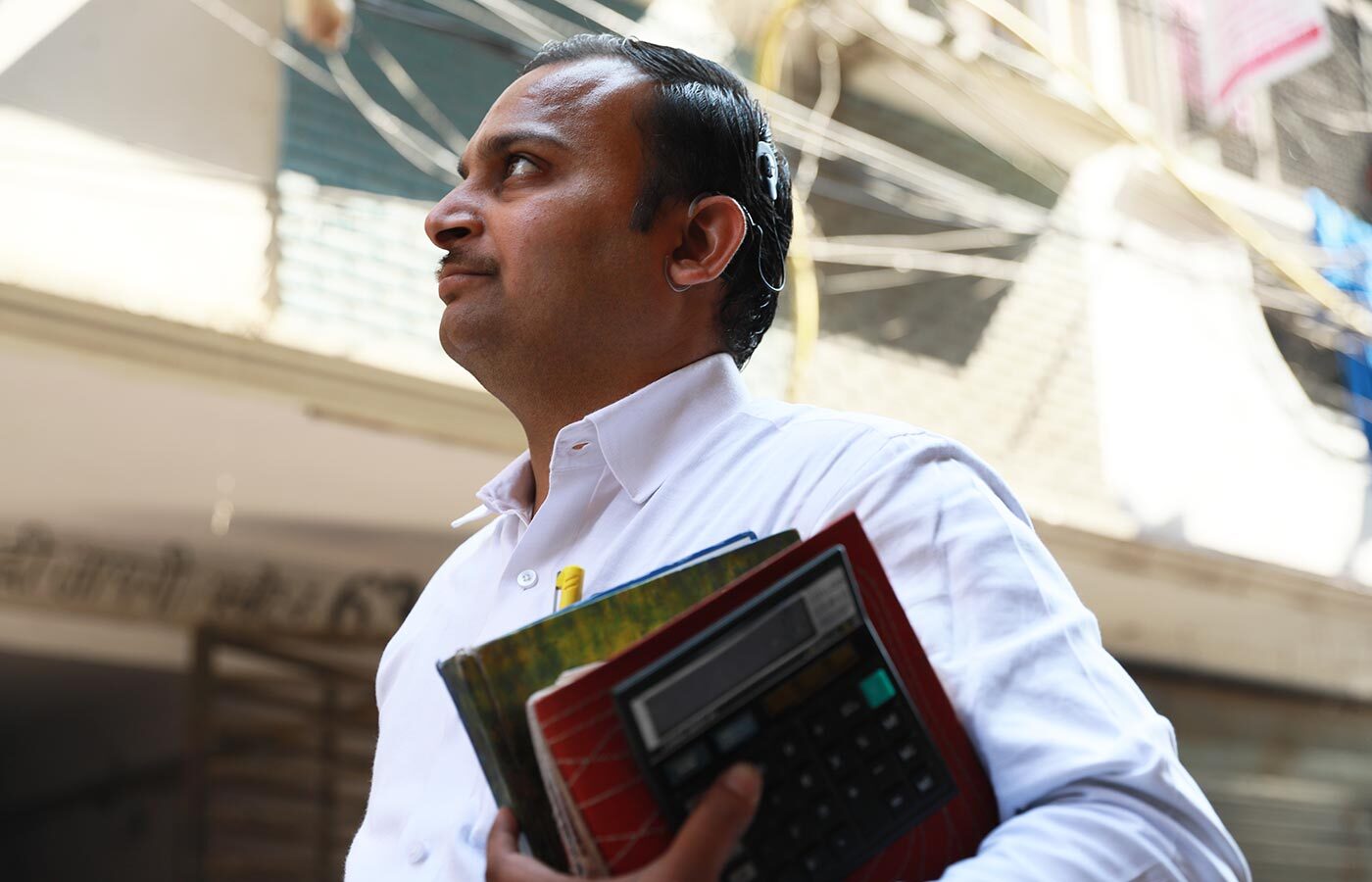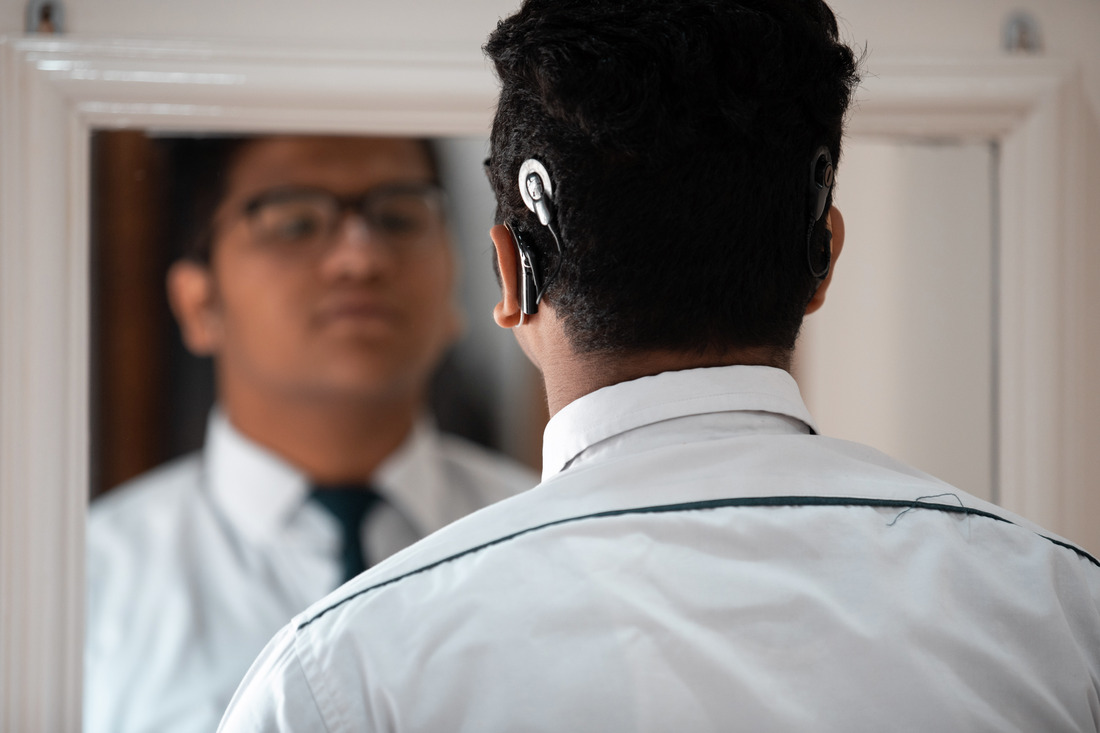How cochlear implants work
Cochlear implants replace the function of the inner ear that isn’t working. Learn how an implanted hearing device can help.

How cochlear implants produce clearer sound
Cochlear implants replace the function of damaged sensory hair cells inside the inner ear.
Unlike hearing aids, which mostly make sounds louder, cochlear implants may further improve the clarity of sound and enhance your ability to understand conversations.1,2,3
A cochlear implant system has two parts:
-
the external sound processor
-
surgeons put the implant under the skin and attach it to an electrode array that’s placed in the inner ear.
Together, the sound processor and implant bypass the part of the ear that isn’t working, sending sound straight to the hearing nerve.
Frequently asked questions
Hearing aids work by amplifying sound, which makes them an ideal solution for mild to moderate hearing loss. However, for severe to profound hearing loss, hearing aids might not be enough for you or your child to understand sounds and learn to speak.4
In this case a cochlear implant might be the best option. Cochlear implants bypass the inner ear to directly stimulate the hearing nerve to provide clarity of sound and speech to help understand what is being said.5
Yes, our latest cochlear implant sound processors are splash-proof, dust-proof and water resistant.^ Additionally, we have a range of accessories to safeguard your child's sound processor during sporting activities.
Yes, as new cochlear implant technology becomes available you can choose to upgrade your child's sound processor to meet their hearing and lifestyle needs.
Cochlear implants have been commonly called ear machines. Cochlear implants may be suitable for children with severe to profound hearing loss, in one or both ears.
Disclaimer
^ The Cochlear Nucleus 8 Sound Processor with Aqua+ is dust and water resistant to level IP68 of the International Standard IEC60529. The Nucleus 8 Sound Processor was tested to a depth of up to 1 metre for up to 1 hour. Refer to the relevant user guide for more information.
Please seek advice from your health professional about treatments for hearing loss. Outcomes may vary, and your health professional will advise you about the factors which could affect your outcome. Always follow the directions for use. Not all products are available in all countries. Please contact your local Cochlear representative for product information.
For a full list of Cochlear’s trademarks, please visit our Terms of Use page.
Views expressed are those of the individual. Consult your health professional to determine if you are a candidate for Cochlear technology.
References
- Fitzpatrick EM, Leblanc S. Exploring the factors influencing discontinued hearing aid use in patients with unilateral cochlear implants. Trends in Amplification. 2010, 14; (4): 199–210.
- Rumeau C, Frere J, Montaut-Verient B, Lion A, Gauchard G, Parietti-Winkler C. Quality of life and audiologic performance through the ability to phone of cochlear implant users. Eur Arch Otorhinolaryngol. 2015, 272: 3685–3692.
- Runge CL, Henion K, Tarima S, Beiter A, Zwolan TA. Clinical outcomes of the Cochlear™ Nucleus®5 cochlear implant system and SmartSound™2 signal processing. J Am Acad Audiol. 2016, 27; (6): 425–440.
- Ching TYC, Dillon H, Button L, SeetoM, Van BuynderP, MarnaneV, Cupples, L, Leigh G. Age at Intervention for Permanent Hearing Loss and 5-Year Language Outcomes. Pediatrics. (2017 Sep); 140(3): e20164274.
- Cox, R. M., Alexander, G. C., Johnson, J., & Rivera, I. (2011). Cochlear dead regions in typical hearing aid candidates: prevalence and implications for use of high-frequency speech cues. Ear and hearing, 32(3), 339–348. doi:10.1097/AUD.0b013e318202e982.
- Ching TYC and Dillon H. Major Findings of the LOCHI study on children at 3 years of age and implications for audiological management. Int J Audiol. (2013 Dec); 52:sup2, S6-S68.







